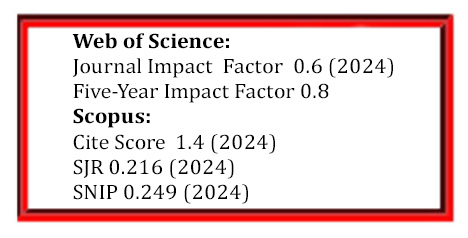Effect of 0.40 % and 0.20 % Titanium Addition on Microstructure Properties and Corrosion Behavior of CuAl10Ni5Fe4 Alloy
DOI:
https://doi.org/10.5755/j02.ms.41403Keywords:
CuAl10Ni5Fe4, heat treatment, forging process, corrosion behavior, microstructureAbstract
This study examined how post-casting heat treatment (solution treatment and tempering) and forging affected the corrosion and microstructural properties of the nickel aluminium bronze (CuAl10Ni5Fe4) with 0.20 % and 0.40% titanium addition. Heat-treated CuAl10Ni5Fe4 alloy microstructures showed copper-rich α-solid solution, martensitic β-phase, and intermetallic κ-phases, such as flake-shaped κI, fine κIII, and black globular κIV. Adding 0.20 % and 0.40 % titanium to CuAl10Ni5Fe4 alloys reduced dendritic arm thickness and increased κ phase abundance. Additionally, significant κIV and κII precipitations were observed in the tempered β phase. Tempering β may cause martensitic β to split into tiny α and κIII phases. The grain refinement of the CuAl10Ni5Fe4, CuAl10Ni5Fe4-0.20 % Ti, and CuAl10Ni5Fe4-0.40 % Ti alloys was significantly noticeable after forging. The alloys retained the same α, β, and κ phases seen in the heat-treated alloys after forging. Titanium's refining effect increased the hardness of the alloy into which it was incorporated. Increased stiff phases, such as tempered β and fine κIV, contribute to increased hardness. The forging process enhanced the hardness of all three alloys. Forged and heat treated CuAl10Ni5Fe4-0.40 % Ti alloy had the highest hardness with 243.50 HB and 256.18 HB, respectively. The microstructural phases α, β, and κ significantly impact the corrosion behaviour of CuAl10Ni5Fe4 alloy. The CuAl10Ni5Fe4-0.40 % Ti alloy after forging had the lowest 24-hour weight loss of 0.003326 mg/dm2. The CuAl10Ni5Fe4 alloy loses the most weight (0.013659 mg/dm²) following heat treatment (S.T.+T) after 24 hours. The minimal corrosion rate for the CuAl10Ni5Fe4-0.40 % Ti alloy after forging was 0.003916 mg/(dm2·day) after 72 hours. Due to stratification, corrosion creates craters. Pitted or porous structures and craters are common. All alloys show a decrease in these structures after forging. The formation of the CuCl2 phase is believed to occur in regions experiencing pitting corrosion.
Downloads
Published
Issue
Section
License
The copyrights for articles in this journal are retained by the author(s), with first publication rights granted to the journal. By virtue of their appearance in this open-access journal, articles are free to use with proper attribution in educational and other non-commercial settings.



